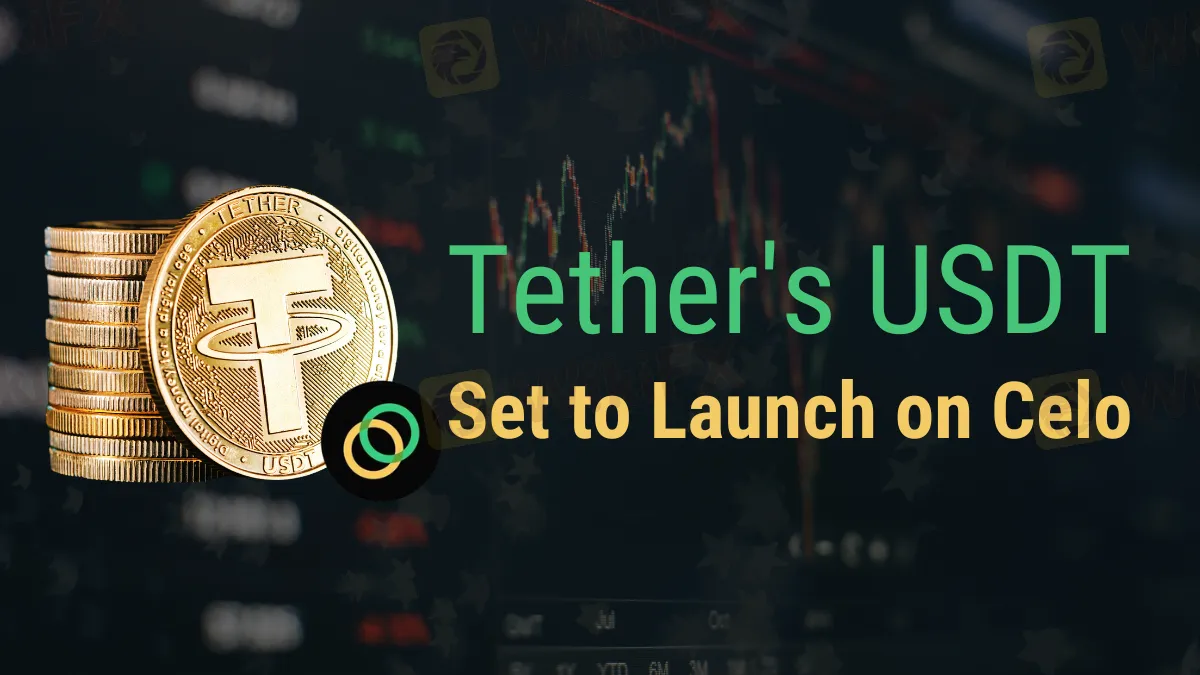简体中文
繁體中文
English
Pусский
日本語
ภาษาไทย
Tiếng Việt
Bahasa Indonesia
Español
हिन्दी
Filippiiniläinen
Français
Deutsch
Português
Türkçe
한국어
العربية
Tether's USDT Set to Launch on Celo
Abstract:Tether's USDT expands via integration with Celo, a mobile-focused layer-1 platform. Enhancing cross-border payments and financial inclusion.

Tether, the most well-known stablecoin based on market value, is well-positioned to expand in use due to its integration with Celo, a dynamic layer-1 platform that prioritizes mobile usage. In particular, in areas where access to conventional financial infrastructure is limited, this purposeful initiative seeks to expedite peer-to-peer and cross-border payments.
Celo has shown itself as a network that encourages mobile use, and it is now moving from a standalone blockchain to a layer-2 system based on Ethereum. Aiming to promote financial inclusion, Celo offers an extensive selection of dependable assets that cater to the requirements of clients around the globe, with a particular focus on developing countries.
The Celo platform's integration of Tether's USDT signals a significant improvement in the ecosystem's steady asset utility. The news release that goes with it emphasizes just a few financial operations that this integration may make simpler, including lending, savings, remittances, and cross-border payments.
Currently, members of the Celo community are investigating the feasibility of utilizing USDT as a gas currency and developing strategies to broaden the scope of financial services provided. By optimizing transaction efficiency inside decentralized apps (dApps), this novel technique seeks to improve accessibility and the overall user experience.

Paolo Ardoino, CEO of Tether, expressed confidence in the collaboration and highlighted how it may further Tether's and Celo's objectives. “A major step forward in our mission will be the integration of Tether USDT on the Celo platform, which is where the real-world world creates,” he said. By using Celo's unique qualities, we can increase Tether's usefulness and accessibility for millions of users.
Furthermore, this collaboration strengthens the case for Tether's will to expand its presence across various blockchain ecosystems. Avalanche, Polygon, and Near are just a few other layer-1 networks where Tether's USDT is now live. By adding Celo to this array, Tether demonstrates its ongoing commitment to advancing accessibility and interoperability within the ever-evolving world of digital money.
In conclusion, the upcoming integration of Tether's USDT on the Celo platform might open up new opportunities for accessible financial services, particularly in disadvantaged areas. With their ongoing innovation and cooperation, both platforms have the potential to significantly contribute to the advancement of financial inclusion and empowerment worldwide.

Disclaimer:
The views in this article only represent the author's personal views, and do not constitute investment advice on this platform. This platform does not guarantee the accuracy, completeness and timeliness of the information in the article, and will not be liable for any loss caused by the use of or reliance on the information in the article.
Read more

First Unfair Trading Case Reported Under South Korea’s Virtual Asset User Protection Act
The Financial Services Commission (FSC) of South Korea has disclosed the first case of unfair trading following the enactment of the Virtual Asset User Protection Act. This law, which took effect in July 2024, aims to regulate the cryptocurrency market and protect investors from fraud and market manipulation.

Upbit Faces Severe Penalties for AML and KYC Violations
Upbit, South Korea’s leading cryptocurrency exchange, faces severe penalties for over 700,000 AML and KYC violations.

BSP Pushes for a Cashless Philippines by 2025
The BSP accelerates cashless transactions, aims for a coin-lite society, eliminates small fund transfer fees, and drives financial inclusion by 2025.

Maya Bank Disburses PHP 68B in Loans, Sets 2024 Record
Maya Bank disburses PHP 68B in loans in 2024, advancing financial inclusion with digital banking innovation, BSP compliance, and secure financial solutions.
WikiFX Broker
Latest News
How Long Can the Dollar Remain Strong?
Forex Price Trend Prediction! | Come be a New Year Price Winner!
HFM NY Special Offer!
How a Promised RM1.4 Million Return Turned into a Costly Scam
First Unfair Trading Case Reported Under South Korea’s Virtual Asset User Protection Act
Cinkciarz.pl Under Fire: Frozen Accounts, Missing Funds
“Predict and Win” Big Rewards! Join the Contest Now
South Korean President Yoon Suk Yeol's Arrest Shakes Markets
Titanium Capital LLC Ponzi Scheme: Henry Abdo Admits Fraud, Impacting Over 200 Investors
South Korea's Crypto Regulation Updates for 2025
Currency Calculator






